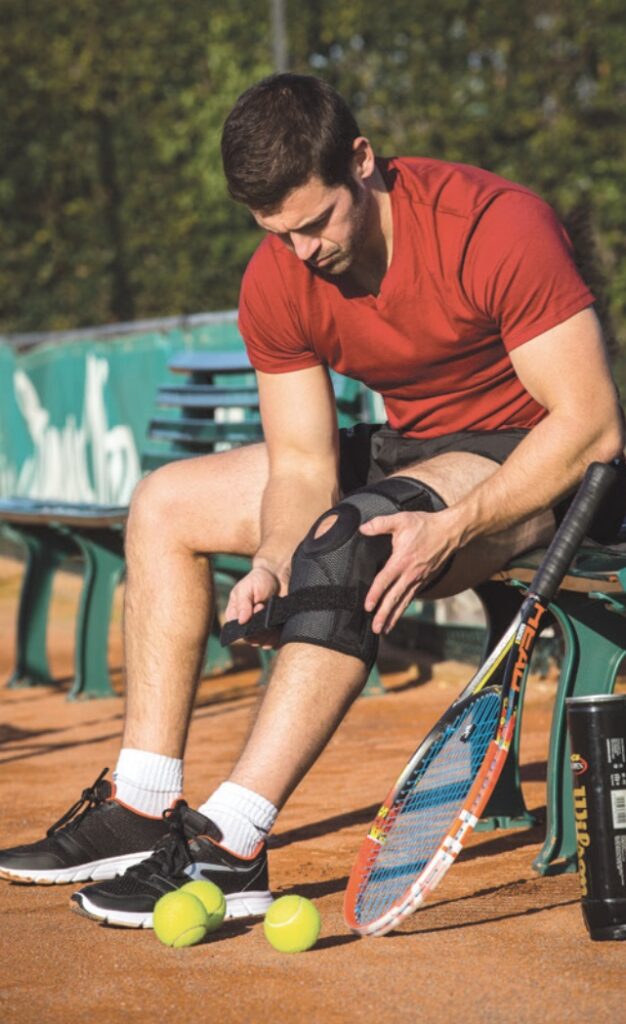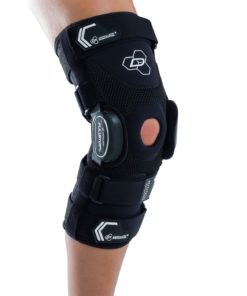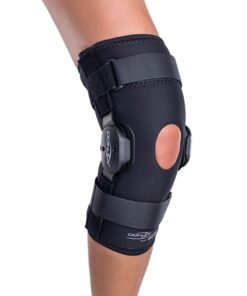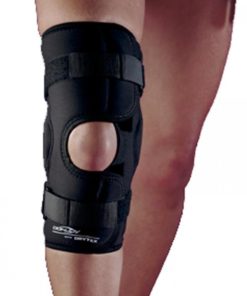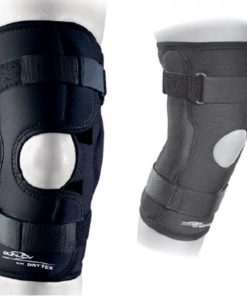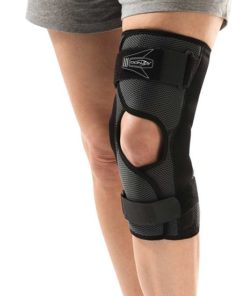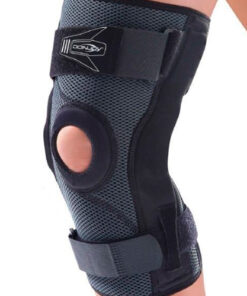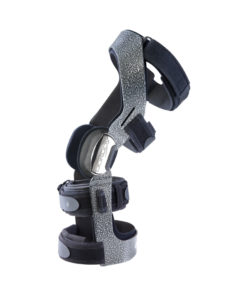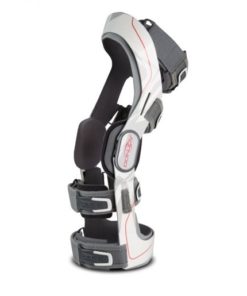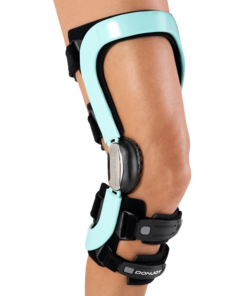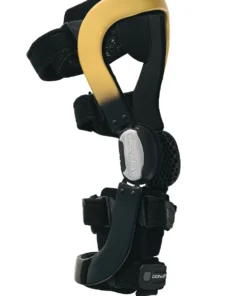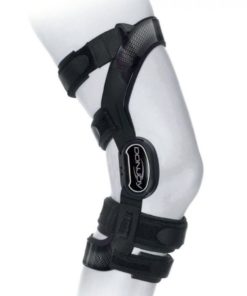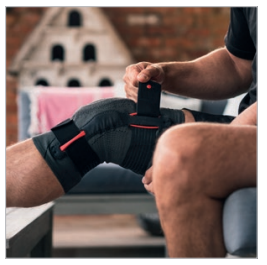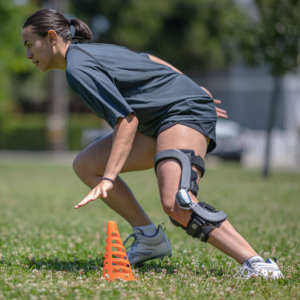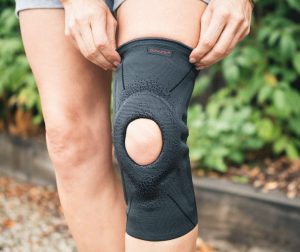Knee Braces for Sport: Enhance Performance and Prevent Injuries
Knee injuries can be a common occurrence in sports, and they often result in significant downtime for athletes. However, by utilizing knee braces, athletes can not only enhance their performance but also prevent such debilitating injuries. In this article, we will explore the numerous advantages of incorporating knee braces into sports training regimens. From providing stability and support to reducing the risk of ligament tears or fractures, these innovative devices have revolutionized the way athletes approach their game. Whether you are a professional athlete or simply enjoy participating in sports recreationally, understanding how knee braces can positively impact your performance is crucial for long-term success and injury prevention. So let us delve into the world of knee braces and discover how they can truly elevate your athletic pursuits while ensuring optimal joint health!
Versatility and Adaptability for Different Sports and Activities
Knee braces offer versatility, making them suitable for a wide range of sports and activities. Whether you’re an avid runner, basketball player, or weightlifter, there is a knee brace designed to meet your specific needs. These braces can be easily adjusted to provide the right level of support and stability required for each activity.
Having a knee brace that adapts to different sports helps athletes maintain their performance while reducing the risk of injuries. Whether you need extra protection during high-impact activities like soccer or added stability during agility-based sports such as tennis, a knee brace can provide the necessary assistance.
Additionally, knee braces are designed to accommodate various body types and sizes. They come in different styles, including sleeves, straps, and hinged options, ensuring that individuals with different needs can find a suitable fit. This adaptability makes knee braces accessible not only to professional athletes but also to casual enthusiasts looking to enhance their performance safely.
Enhanced Stability and Support
- Knee braces provide enhanced stability and support to the knee joint, which is crucial in sports that involve running, jumping, or abrupt changes in direction.
- By providing external support to the knee, braces help prevent excessive movements that could lead to ligament damage or other injuries.
- The compression effect of a knee brace also aids in stabilizing the patella (kneecap), reducing the risk of dislocation during physical activities.
Injury Prevention and Rehabilitation Aid
- Knee braces are not only effective for preventing injuries but also serve as an essential tool for rehabilitation after an injury.
- After a knee injury, wearing a brace can provide added protection and support during recovery, helping athletes maintain their mobility while minimizing further damage.
- Additionally, knee braces can aid in reducing pain and inflammation by applying gentle pressure around the affected area.
Versatile Design for Various Sports
- Knee braces come in different designs to accommodate various types of sports activities.
- There are specific braces designed for sports like basketball or soccer that offer additional padding around sensitive areas such as the anterior cruciate ligament (ACL) or meniscus.
- Other athletic activities like skiing may require more flexible yet supportive knee bracing options to allow freedom of movement while reducing strain on the joints.
ACL Knee Injury
ACL Knee Injury
ACL Knee Injury
ACL Knee Injury
Prevention of Ligament Tears and Fractures
Knee braces provide crucial support to the ligaments, reducing the risk of tears and fractures during sports activities.
- By stabilizing the knee joint, braces help distribute forces evenly, minimizing strain on ligaments.
- The compression offered by knee braces can also enhance proprioception and kinesthesia, improving balance and coordination to reduce the likelihood of accidents that could lead to debilitating injuries.
- Knee braces act as a protective barrier against external impacts or collisions by absorbing shock and limiting excessive movement.
- They restrict potentially harmful movements such as hyperextension or sudden twisting motions that may result in ligament tears or fractures.
With their ability to prevent such injuries,
- Knee braces allow athletes to participate confidently in rigorous sports without compromising their performance or risking long-term harm.
Accelerated Recovery and Rehabilitation
Knee braces can play a significant role in accelerating recovery and rehabilitation from sports injuries.
- Stability and Support: Knee braces provide stability to the injured knee, allowing athletes to engage in controlled movements during their recovery process. This support helps minimize further damage, promoting faster healing.
- Reduced Swelling: The compression provided by knee braces helps reduce swelling around the injured area by improving blood circulation and lymphatic drainage. By minimizing swelling, athletes can experience less pain and inflammation, facilitating a quicker return to their sport.
- Protection Against Reinjury: Knee braces act as a protective barrier against reinjury when returning to sports activities after an injury. By providing additional support, they help prevent sudden twists or impact forces that could potentially aggravate or re-injure the recovering knee.
Overall, utilizing knee braces in sports not only enhances performance but also aids in preventing injuries, while expediting the recovery process for athletes who have experienced knee-related issues.
Customizable Fit for Individual Athletes
Knee braces offer a customizable fit for individual athletes, allowing them to adjust the brace to their specific needs. This is crucial, as every athlete has different knee sizes and shapes, and what works for one may not work for another. With adjustable straps and hinges, athletes can find the perfect level of support and comfort that suits their unique body.
The ability to customize the fit also ensures maximum effectiveness in preventing injuries. By properly aligning the knee joint during movement, a well-fitted brace reduces stress on vulnerable ligaments and tendons. It provides stability while still allowing freedom of motion, enabling athletes to perform at their best without compromising safety.
In addition, many modern knee braces come with padding or cushioning options that further enhance comfort and protection. Whether an athlete needs extra shock absorption or targeted pressure relief, they can tailor their brace accordingly. This individualized approach makes knee braces an ideal choice for athletes who want optimal performance while reducing the risk of injury.
Most Asked Questions
The type of knee brace you should use for sports depends on the type and severity of your knee injury, as well as the type of sport you are participating in. Generally, there are two main types of knee braces: functional and prophylactic. Functional knee braces are designed to support and protect knees that have already been injured, while prophylactic knee braces are designed to prevent knee injuries in healthy athletes. Your doctor or physical therapist can help you determine which knee brace is best for your specific needs. It’s important to choose a knee brace that fits properly and is comfortable to wear during physical activity.
Knee braces are not always necessary for sports, but they may be recommended for certain individuals who have a history of knee injuries or who are at high risk of knee injuries due to their sport. Knee braces can help support and stabilize the knee joint, which can reduce the risk of further injury. They can also help relieve pain and provide additional protection during physical activity. However, it’s important to consult with a medical professional, such as a doctor or physical therapist, before using a knee brace. They can help determine if a knee brace is necessary for your specific sport or injury, and recommend the appropriate type of knee brace for your needs.
Although knee braces are designed to support and protect the knee joint, they are not necessarily meant to improve athletic performance. In some cases, a knee brace may limit a person’s range of motion or overall mobility, which can actually hinder performance. However, if a person has a history of knee injuries or is at high risk for knee injuries, wearing a knee brace may provide additional support and confidence during physical activity, which could indirectly improve performance. It’s important to understand that knee braces are not a guaranteed solution for preventing knee injuries or enhancing athletic performance, but they may be a useful tool for certain individuals.

